|
Polina Raiko lived all her life (1928 – 2004) in the Ukrainian town of Tsyuryupinsk. Shortly before her death, she was found by Totem Group activists, who preserved her house and published a catalogue of her works to let the world know her story. Pelageya (Polina) Andreevna Raiko (born Soldatova) was born in Tsyuryupinsk in 1928. At the age of 22, she married Nikolai Alexeevich Raiko. The family survived thanks partly to their own vegetable garden and occasional employment as seasonal workers in a kolkhoz. Polina and Nikolai brought up two children: Elena, born in 1951, and Sergei, born in 1953. In 1954, they built a new house on a new place beside the river. Polina may very well have never taken a brush in her hands if it were not for the sudden tragedy that befell her in 1994 when her beloved daughter Elena was killed in a car accident. She still had her husband and two sons, though not for long. The following year, in December, Polina's husband also died. Two years later, her son Sergei was brought to correctional facility. This last occasion, however, may have been for the better as Sergei had almost ruined the house and drunk away all their valuables, including their electrical wiring. Still, after three years in prison, he resumed his pogroms in the house. He even went as far as to attack his mother with a knife and wound her. This story could have ended very differently had he not died from cirrhosis in 2002. Polina‘s first compositions were painted on her walls in the autumn of 1998 when Sergei was in prison. Being alone, Polina tried to somehow put her thoughts together and to establish order. "Anyway, I had to make up and to color the walls," Polina said, "So, I decided to draw something to take joy in it.“ However, there was no joy; every new composition was born with tears, "To keep from crying I began to sing. I stand on a table drawing and singing. My house is empty." Her neighbors thought that granny went mad, but many liked her drawings. In spite of her age, granny Raiko continued to work for food and some money. She spent her miserly pension (74 hryvna, which is approximately equal to 15 USD) on brushes. For her paintings Polina used the simplest and cheapest paints, which she bought at a local market: enamel PF, which is usually used to paint floors, fences, and doors. Over the course of four years, these images that covered the walls, floors, and doors of her home soon went out into the street, covering wickets, fences, and garage gates. Polina began to take orders from her friends, decorating parts of walls in houses, stoves, gates, and even headstones at a local cemetery. Gradually Polina Raiko‘s house became a local place of interest visited by great number of journalists, art lovers, and tourists. Polina‘s painting did not bring her money; on a rare occassion some of her guests would chip in to help granny with money for paints or brushes. She won recognition, but hardly noticed it, taking great pleasure in showing her guests photos of her house and press cuttings, but hardly letting it impact her artistic drive. In 2003, members of the Youth Initiative Center Totem, an NGO from Kherson, visited her. Polina looked cheerful and full of creativity. A publication of a catalogue was planned, however, on January 15, 2004 Polina Raiko passed away. Her death was easy and painless and instant. Just as she saw it; on one of her walls Polina painted a Road to Paradise, simple and joyous, all in flowers. Her last work was her self-portrait painted on a mirror‘s reverse side, the only paint-free piece in her house. On the picture, she is young and beautiful… About Her Works The works of Polina Raiko somewhat differ from what is typically called called classical naïve art. Some compare her paintings with the outsiders' works. She did not have art education besides school lessons in drawing, of which granny had only elusive memories. She did not have a TV set in her house, which, probably, helped keep that amazing frankness and purity of images originating from the outside world and her own memories. Her imaginative system included Christian, Soviet, and pagan symbolism, which the artist probably never consciously considered. Polina called her impulse to create a God‘s grace for all her suffering and difficulty in life. Having no formal drawing skills, granny Polina tried several different ways of creating images carrying them over to the walls. Some were very naïve methods, which she never shared with anyone. Only after her death, pieces of calendars, hard paper, and envelopes were found among her correspondence. Polina drew drafts on all those pieces and then tried to transfer some of them to the walls by different means. In her properties, several cellophane films were found, on which drawings were made with ball-point pen. Somewhere an outline of an original picture was made or its enlarged image and sometimes, some drawings were cut from the film with scissors. This is how the initial sketches were probably transferred to the walls. A sketch is probably not the best way to describe these works. They are more like exercise pictures. Granny brought home images that she liked, which could be labels, postmarks, or postcard, and then she tried to recreate them. In her drafts, a wrapper of a Chaika (seagull) chocolate was found. Polina first made an exact copy of the image, then she turned over the paper and then most likely repeated it from memory. Entirely different from the original wrapper image, white seagulls are almost in every room. There are other examples which show how Polina Raiko transformed mass produced images into personal ones. In a central room (it can be called a reception-room) all the guests were always attracted by an angel with children. A big red star is hanging above the angel‘s head. In the same room, there is a picture of a captain (a woman in a military uniform with a gun. The caption says, "May 9."), which is separated from the angel by a window. It is obvious that Polina drew the red star above the angel in her peculiar manner of mixing two mythologems–the Christian and the Soviet--as a result, the Soviet epoch of her youth was sanctified. As in case with the sea-gull, the details only became clear after searches in a little archive of Polina's papers and properties of Polina. An icon was found, on which an angel and children were painted, a star was above the angel‘s head, but it was white. Granny Polina did not answer who the children behind the angel were, but, probably those were her daughter and son. It is not be fair to say that Polina Raiko copied the images which she saw, but rather she used them as any artist uses the world around them as a source of inspiration, as raw material for their own allusions. Thus the final image is so much reconsidered that it is shown in some different reality, different view. From those mass replicated images the artist only received initial information, some sort of language, which helped her to tell absolutely different stories. In a similar manner, she used local song folklore as a foundation for her drawings; one story in particular was about a couple of pigeons, two parents, from whom a raven stole a baby bird. Polina Raiko repeated this story many times in different parts of her house and thus, created her own canon, which had not been witnessed anywhere before. In this specific transformation of images there is one aspect which makes the art of Polina Raiko similar to outsiders‘ works. She distorted her images unknowingly, spontaneously, which means that she was not looking for an artistic image and did not try to evaluate it for artistic value as professional painters do. Her use of the the hammer and a sickle, classic Soviet iconography, is evidence of this. This image is repeated twice. One time it is on an inner side of the gate, and another time it is on a wall of the house. However, in both cases, they are on a sail of a ship. The symbol is so much transformed that almost none of the visitors recognized it. Nevertheless, Polina Raiko could not avoid drawing it as it was an integral part of the image. The recognizability of the image was secondary to her need to create, to transfer the image from her consciousness and sub-consciousness to the material. This is where we approach a second aspect which connects Raiko‘s works with outsiders': in both cases, this art reminds us of a volcano about to erupt. This is an abscess which must break through so that someone sick can feel better. This feeling should not be hidden inside because this is both the sickness and its own cure. As for the subjects of her paintings, they conveyed Polina Raiko's life story; her relatives, domestic animals, and landscapes are all featured along her walls. The general impression left after visiting her house can only be expressed by a phrase that is both banal yet poignant: you enter the gates and you enter the fairy tale. Everywhere around you there is a sea of flowers, a multitude of birds and angels. Gigantic leopards, kingly peacock, snow-white swans, images of the Virgin Mary holding the infant Christ, and Polina‘s three sisters (the fourth sister is Polina herself). All of these elements create an impression of a single installatiomeant to gather and concentrate the essence of a simple woman and her dreams of happiness and well-being, beauty and power of life, of Eden on Earth and Heaven. Preservation of the Artist's Heritage The issue of heritage preservation became acute after the artist‘s death. Her inheritor (Polina‘s grandson) was not interested in preserving the house and planned to sell it for further demolition. During half a year, some of the objects were ruined. Totem Group members found experts, conducted in Kherson a country-wide conference dedicated to the issue of preservation of Raiko's heritage, and launched active work at all levels. They managed to stop sale of the house and it was registered for further research. Nevertheless, state culture institutions ignored the necessity of museum creation, so the Totem had to look for private sponsors who could redeem the house. Sponsors were found and today Raiko‘s house is open for visitors and more and more people have learned about it in Ukraine and in Europe. The full catalogue of her works is published by the Totem is in museums, galleries, and art centers around Ukraine. However, the work is not finished yet; temporary closing-down of the house and development of a strategy of creation of a full-fledged museum, either private or state, is planned. Still, it is important that the rare pearl of Ukrainian culture–the unique heritage of Polina Raiko—is preserved. At least for the time being…
Recommended articles

|
|
Author dreaming of a future without censorship we have never got rid of.
It seems, that people don‘t care while it grows stronger again.
|

|
|
“A person must shake someone’s hand three times while gazing intently into their eyes. That’s the key to memorizing their name with certainty. It is in this way that I’ve remembered the names of 5,000 people who have been to the Horse Hospital,” Jim Hollands told me. Hollands is an experimental filmmaker, musician and curator. In his childhood, he suffered through tough social situations and…
|

|
|
Nick Land was a British philosopher but is no longer, though he is not dead. The almost neurotic fervor with which he scratched at the scars of reality has seduced more than a few promising academics onto the path of art that offends in its originality. The texts that he has left behind are reliably revolting and boring, and impel us to castrate their categorization as “mere” literature.
|

|
|
Goff & Rosenthal gallery, Berlin, November 18 - December 30, 2006
Society permanently renegotiates the definition of drugs and our relationship towards them. In his forty-five minute found-footage film The Conquest of Happiness, produced in 2005, Oliver Pietsch, a Berlin-based video artist, demonstrates which drugs society can accommodate, which it cannot, and how the story of the drugs can be…
|
|







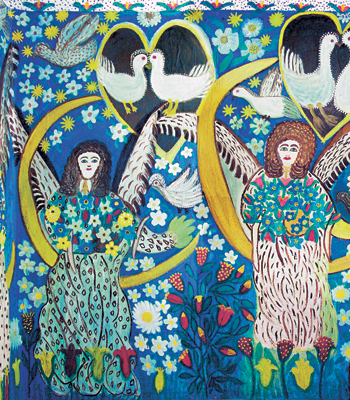
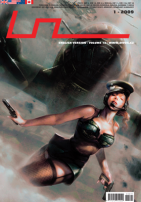












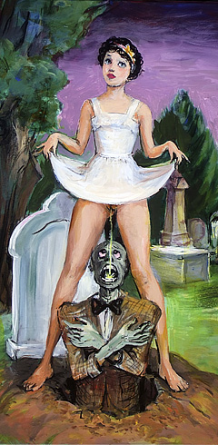






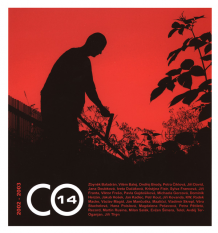




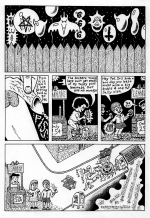
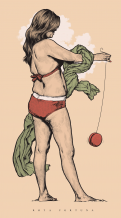
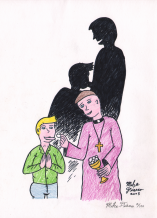
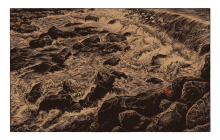


 New book by I.M.Jirous in English at our online bookshop.
New book by I.M.Jirous in English at our online bookshop.
Comments
There are currently no comments.Add new comment